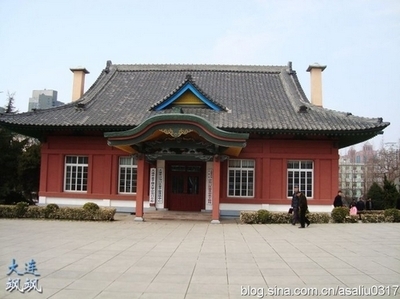请对米兰·昆德拉及“媚俗”这个词感兴趣的人读一读下面的文字,会很有启发。
——选自社会科学文献出版社1999年1月出版的《小说的艺术》一书中的《小说是让人发现事物的模糊性——昆德拉访谈录(1984年2月)》(谭立德译)
……
米兰·昆德拉(以下简称M.K):……小说应该毁掉确定性。况且,这也是作者与读者之间产生误解的根源。读者时常问:“您究竟在想什么?您要说什么?什么是您的世界观?”这些问题对小说家来说是很尴尬的,确切地说,小说家的才智在于确定性的缺乏(l'absencedecertitude),他们萦绕于脑际的念头,就是把一切肯定变换成疑问。小说家应该描绘世界的本来面目,即谜和悖论。
安托万·德·戈德马尔(以下简称A.G):模糊和怀疑的敌人,就是您称之为“媚俗”(kitsch)的世界,即美学的确定性和因循守旧的王国,它的结果是导致极权的媚俗。在您的小说里,您好几次提出这个媚俗性,您写道,它“把人类存在中基本上不能接受的一切排斥在它的视野之外”。
M.K:kitsch是19世纪产生于德国的一个词,它的含义已经逐渐起了变化,今天,在法国,仅仅意味着某种美学风格,低劣的艺术。但是,远远不止于此;这是一种由某种对世界的看法所支撑的美学,这几乎是一种哲学。这是知识之外的美,是美化事物、取悦于人的意愿,是完全的因循守旧。我在那本书中重新提出海尔曼·布洛赫的著名论点,他在《文学创作和认识》中,清算了源于德国浪漫主义的媚俗精神,据他看来,这媚俗精神一直延续到瓦格纳。我则认为,不如说,到柴可夫斯基:一种要引起激动,并且得以成功的有效的音乐,但是,非常传统,是某种艺术上的煽情。这种蛊惑存在于西方,也存在于东方。当然,极权的国家发展了这种媚俗,因为,这些国家不能容忍个人主义、怀疑主义和嘲笑。社会主义现实主义,就是媚俗的胜利。在站后的苏联,人们心安理得地对美术学院的学生解释,苏维埃社会已经是如此先进,因而,基本的冲突不再是好与坏的冲突,而是好与更好的冲突!在西方,这种媚俗性尤其被政治派别当作媒介物,看看美国的选举运动……
A.G:您的意思是政治产生媚俗吗?
M.K:政治并不产生媚俗,但它需要媚俗。任何政治运动都以媚俗、以迷惑他人的愿望为基础。从政治角度来说,世界是白的或黑的。模棱两可、矛盾和悖论是没有任何位置的。每一位自尊的政治家都不会说:“我认为……但是,我不能肯定是对的……”或者:“虽然,我们也可以做那个,但应该做这个。”他会说:“我认得未来的道路,我知道我是对的,”等等。
--------------------------------------------------------------------
环孢素硼替佐茶 (山猫扮萝莉)
不能承受的生命之轻的评论 5
又收到一位朋友的来信,信中再一次提到媚俗——大概一个礼拜前我们在MSN上的时候说起过的。于是就再一次思考起“媚俗”的问题。不得不承认,文字的翻译是个骗人的家伙,一个德语的kitsch,变成了“媚俗”的时候,不知道产生了多大的变化。
昆德拉在书中说“因此,对生命的绝对认同,把粪便被否定、每个人都视粪便为不存在的世界成为美学的理想,这一美学理想被称之为kitsch。”
在我看来,这是十足的对“俗”的否定,可称之为“媚雅”,不知为什么,翻译的时候倒反其意行之了。
媚俗的根源在于对生命的绝对认同,在媚俗的王国,实施的是心灵的专制,由媚俗激起的感情,必须能让最大多数人分享,媚俗是掩盖死亡的一道屏风。
这是昆德拉对媚俗的继续解读——这样看来,把kitsch翻译成“媚俗”似乎也可以理解了,粪便(无法接受的东西,反生命的东西,代表死亡的东西)并不是俗,大众都接受的,生命的,认同生命的,倒是可以称为“俗”的了。
“媚俗一旦失去其专横的权力,它就像人类的任何一个弱点一样令人心动。因为我们中没有一个是超人,不可能摆脱媚俗。不管我们心中对它如何蔑视,媚俗总是人类境况的组成部分。”
兴许这一段是整本书读下来最让我感到丧气的一段话,然而仔细思考过后,仍旧不得不沮丧地承认——这是真的,至少对99.99%的人来说,是真的。确实,任何一种观点,无论它现在处于何种地位:被追捧的统治地位,或者是被排斥的被专政地位,人的弱点使然,它们终究以己为是,希望有一个群体共享这种观点——这就构成了媚俗。
今天又重读了昆德拉关于媚俗的论述,得出的上述看法,想到前几天的写过的字,还有跟这位朋友说起过的媚俗,不免有些浅显和望文生义。
如果做点修改,大致可以这么说:媚俗无处不在,媚俗没有高下之分,只有大众和小众之分。再简单点说,就是:媚俗面前,人人平等。
---------------------------------------------------------------
读豆瓣上几篇对这本小说的评论,一个叫Nullpointer的豆友如是说:
4.什么是媚俗(Kitsch),媚俗不是庸俗,也不是取悦大众。在wiki上其实有kitsch从现代主义艺术浪潮说起的冗长解释。给个简明解释的话,Kitsch就是“矫情”,随时意识着自己的情绪,并保持这种情绪的“正当合法”,哭不是为了悲痛,是因为应该悲痛。笑不是为了幸福,是为了应该感到幸福。以上的,基本被昆德拉看作是人类无聊的表现,是一种Kitsch,翻译成媚俗之后。就和红楼梦的意淫一样,被广泛的误解了。读这本小说,看萨宾娜怎么嘲笑Kitsch是个很有趣的事儿。
“随时意识着自己的情绪,并保持这种情绪的‘正当合法’”这句话可说相当精辟。又想到许久以前另一位朋友对我的评价——说我是个相当有“道德自满感”的人。从某种意义上来说,道德自满感和媚俗,就是一回事了,当时想想,虽然觉得难以接受,但是也不得不承认,自己确实有点,于是也不得不承认,我是一个相当媚俗的人了。![[转]从米兰·昆德拉的“媚俗”说起 米兰昆德拉的媚俗](http://img.413yy.cn/images/31101031/31013241t012607d64398d2e26e.jpg)
按照这种标准,媚俗可理解为一种情结——满足于自身现有状态、观点的情结。如果可以这样认为,讽刺的是,被媚俗的专横所笼罩的大众往往不是特别有媚俗情结的人,倒是视媚俗为敌人,誓与媚俗奋战到底的人,有些媚俗情结严重。有人这样定位读林达书的人,说他们是“小部分的大众,而非大部分的小众”,在我看来,这小部分的大众恰恰就是媚俗病的高发人群——刚刚摆脱了“俗”,有了一点“小雅”,却还算不得“大雅”的人。这种媚俗症状,可以算得是从平庸走向睿智的阵痛,自知的庆幸。有了这种症状,多少总比埋没在媚俗专制中不自知的好。但是,阵痛总归还是痛,阵痛之后,总还是要胎儿出生的才好,倘若持续在将为人母的幸福幻想中,而不知用力——多半是要胎死腹中的。
--------------------------------------------------------------
以下内容来自维基百科(有删改):
Kitsch (English pronunciation: /ˈkɪtʃ/, loanword from German) is aform of artthat is considered an inferior, tasteless copy of an extant style of art or a worthlessimitation of art of recognized value. The concept isassociated with the deliberate use of elements that may be thoughtof as culturalicons[1](文化偶像)while making cheap mass-producedobjects that are unoriginal. Kitsch also refers to the typesof art that are aestheticallydeficient (whether or not being sentimental, glamorous,theatrical, or creative) and that make creative gestures whichmerely imitate the superficial appearances of art through repeatedconventions and formulae. (反义词可能是originality,fine-art,genuine,creative. I guessso.)
Thecontemporary definition of kitsch is consideredderogatory, denoting works executed topander to popular demand alone and purely for commercialpurposes rather than works created as self-expression by anartist.[2]The term is generally reserved for unsubstantial and gaudy worksthat are calculated to have popular appeal and are consideredpretentious and shallow rather than genuineartistic efforts.[3](目的可能是取悦大众,因而牺牲质量和品位,矫揉造作,肤浅粗俗)
Theconcept of kitsch is applied to artwork that was a response to the19th century art with aesthetics thatconvey exaggerated sentimentalityand melodrama,hence, kitsch art is closely associated with sentimentalart.(过度的情绪化、戏剧化的东西)
不难看出,在不同的时代Kitsh也被赋予了不同的含义,以回应当时艺术领域的不同现实。
追根溯源吧。。。。
There is a philosophical background to kitsch criticism,however, which is largely ignored. A notable exception to the lackof such debate is Gabrielle Thuller, who points to how kitschcriticism is based on Immanuel Kant'sphilosophy of aesthetics.
Kant describes the direct appeal to the senses as"barbaric"(without civilizing influences,野蛮、粗野的;还有unrestrained andcrudely rich不知节制、肆无忌惮的意思). Thuller's point is supported by Mark A.Cheetham, who points out that kitsch "is his ClementGreenberg's barbarism". A source book on texts critical ofkitsch underlines this by including excerpts from the writings ofKant and Schiller.
One, thus, has to keep in mind two things: a) Kant's enormousinfluence on the concept of "fine art" (the focus ofCheetham's book), as it came into being in the mid to late 18thcentury, and b) how "sentimentality" or "pathos",which are the defining traits of kitsch, do not find room withinKant's "aestheticalindifference".(不论是理性还是非理性,康德是在一个哲学框架内展开探讨,普遍性、合目的性、带有必然性的主观性,无意关照个人的痛苦和悲伤吧)
Kant also identified genius with originality. One could say heimplicitly was rejecting kitsch, the presence of sentimentality andthe lack of originality being the main accusations against it.
When originality alone is used to determine artistic genius,using it as a single focus may become problematic when the art ofsome periods is examined. In the Baroque period, for example, apainter was hailed for his ability to imitate other masters, onesuch imitator being Luca Giordano.
Another influential philosopher writing on fine art wasGeorgWilhelm Friedrich Hegel, who emphasized the idea of the artistbelonging to the spirit of his time, or zeitgeist(时代精神).
As an effect of these aesthetics, working with emotional and"unmodern" or "archetypical" motifs was referred to as kitsch fromthe second half of the 19th century on. Kitsch is thus seen as"false"(假的).
As Thomas Kulka writes, "the term kitsch was originally appliedexclusively to paintings", but it soon spread to other disciplines,such as music. The term has beenapplied to painters, such as IlyaRepin(伊利亚列宾),[5]and composers, such as PyotrIlyich Tchaikovsky(柴可夫斯基), whom Hermann Brochrefers to as "genialischer kitsch", or "kitsch ofgenius".[6][7]
Roda Roda claimed in a 1906 newspaper articleto be the only person who knew the true origin of "kitsch," which -according to him - derived from "ver" and "kitt", orputting, pasting, etc. something togetherwrong.
The word, kitsch, was popularized in the 1930s by the arttheorists Theodor Adorno,Hermann Broch, andClementGreenberg, who each sought to define avant-garde(先锋派) andkitsch as opposites(与先锋相对,那就是保守、守旧、大众喽). The art world of the timeperceived the immense popularity of kitsch as a threat to culture.The arguments of all three theorists relied on an implicitdefinition of kitsch as a type of falseconsciousness(错误、虚假的意识), a Marxistterm meaning a mindset present within the structures of capitalism that ismisguided as to its own desires and wants. Marxists believe thereto be a disjunction between the real state of affairs and the waythat they phenomenally appear.
Adorno perceived this in terms of what he called the "cultureindustry", where the art is controlled and formulated by theneeds of the market and given to a passive population which acceptsit—what is marketed is art that is non-challenging and formallyincoherent, but which serves its purpose of giving theaudience leisure and something to watch or observe. It helps servethe oppression of the population of capitalism by distracting themfrom their socialalienation. Contrarily for Adorno,art is supposed to be subjective, challenging, and orientedagainst the oppressiveness of the power structure. Heclaimed that kitsch is parody of catharsis and a parodyof aesthetic experience(拙劣的情绪发泄和美学经历).
Broch called kitsch "the evil within the value-system ofart"—that is, if true art is "good", kitsch is "evil". While artwas creative, Broch held that kitsch depended solely on plunderingcreative art by adopting formulas that seek to imitate it,limiting itself to conventions and demanding a totalitarianism(集权主义)of those recognizable conventions.(模仿真正的美以屈服于俗见和惯习,不利于真正的文化和艺术的发展)Broch accuses kitsch of notparticipating in the development of art, having its focus directedat the past, as Greenberg speaks of its concern with previouscultures. To Broch, kitsch was not the sameas bad art; it formed a system of its own. He argued that kitschinvolved trying to achieve "beauty" instead of "truth" and that anyattempt to make something beautiful would lead to kitsch.Consequently, he opposed the Renaissance toProtestantism.
Greenberg held similar views to Broch concerning the beauty andtruth dichotomy, believing that the avant-garde style arose inorder to defend aesthetic standards from the decline of tasteinvolved in consumer society and that kitsch and art wereopposites, which he outlined in his essay "Avant-Garde andKitsch".
One of Greenberg's more controversial claims was that kitsch wasequivalent to academicart(学院艺术是指一种在欧洲艺术学院和大学的影响下所产生的绘画和雕塑的流派。): "All kitsch isacademic, and conversely, all that is academic is kitsch." Heargued this based on the fact that academic art, such as that inthe nineteenth century, was heavily centered in rules andformulations that were taught and tried to make art into somethingthat could be taught and easily expressible. He later came towithdraw from his position of equating the two, as it becameheavily criticized.(呵呵,树了多少敌人啊,终于顶不住了……)
Often nineteenth century academic art still is seen as kitsch,although this view is coming under attack frommodern artcritics. Broch argued that the genesis of kitsch wasin Romanticism, whichwasn't kitsch itself, but which opened the door for kitschtaste by emphasizing the need for expressive and evocative artwork. Academic art, which continued this tradition ofRomanticism, has a twofold reason for its association withkitsch.
It is not that academic art was found to be accessible. In fact,it was under its reign that the difference between highart and low art first was defined by intellectuals. Academicart strove toward remaining in a tradition rooted in the aestheticand intellectual experience. Intellectual and aesthetic qualitiesof the work were certainly there—good examples of academic art evenwere admired by the avant-garde artists who would rebel against it.There was some critique, however, that in being "too beautiful" anddemocratic it made art look easy, non-involving, and superficial.According to Tomas Kulka, any academic painting made after the timeof academism, is kitsch by nature.
Many academic artists tried to use subjects from low art andennoble them as high art by subjecting them to interest in theinherent qualities of form and beauty, trying to democratize (大众化)theart world. In England, certain academics even advocated that theartist should work for the marketplace. In some sense the goals ofdemocratization succeeded and the society was flooded with academicart, with the public lining up to see art exhibitions as they do tosee movies today.
Literacy in art becamewidespread, as did the practice of art making, and there wasa blurring of the division between highand lowculture. This often led to poorly made or conceivedartwork being accepted as high art. Often, art which was found tobe kitsch showed technical talent, such as in creating accuraterepresentations, but lacked good taste.(技术高超,但品位不够级别)
Furthermore, although original in their first expression, thesubjects and images presented in academic art were disseminated tothe public in the form of prints and postcards, which oftenactively was encouraged by the artists. These images were copiedendlessly in kitschified form until they became well-knownclichés.
The avant-garde reacted to these developments by separatingitself from aspects of art that were appreciated by the public,such as pictorial representation and harmony, in order to make astand for the importance of the aesthetic. Many modern critics trynot to pigeonhole academic art into the kitsch side of theart-or-kitsch dichotomy, recognizingits historical role in the genesis of both the avant-garde andkitsch.
With the emergence of postmodernism inthe 1980s, the borders between kitsch and high art again becameblurred. One development was the approval of whatis called "camp taste" - which may be related to, but is not the sameas camp when used as a "gay sensibility".[8]Camp, in some circles, refers to an ironic appreciation ofthat which might otherwise be considered corny, such assinger and dancer Carmen Mirandawith her tutti-frutti hats, or otherwise kitsch, such as popular cultureevents that are particularly dated or inappropriately serious, suchas the low-budget science fiction movies of the 1950s and1960s.
A hypothetical example from the world of painting would be akitsch image of a deer by a lake. In order to make this camp, onecould paint a sign beside it, saying "No Swimming". The majestic orromantic impression of a stately animal would be punctured byhumor; the notion of an animal receiving a punishment for thebreach of the rule is patently ludicrous. The original, serioussentimentality of the motif is neutralized, and thus, it becomescamp.
"Camp" is derived from the French slang termcamper, which means "to pose in an exaggerated fashion".Susan Sontag arguedin her 1964 Notes on "Camp"that camp was an attraction to the human qualities which expressedthemselves in "failed attempts at seriousness",the qualities of having a particular and unique style, and ofreflecting the sensibilities of the era. It involved an aestheticof artifice rather than of nature. Indeed, hard-line supporters ofcamp culture have long insisted that "camp is a lie thatdares to tell the truth"(啊?不明白).
Much of pop art attempted toincorporate images from popular culture and kitsch. These artistsstrove to maintain legitimacy by saying they were "quoting" imageryto make conceptual points, usually with the appropriation beingironic.
In Italy, a movement arosecalled the Nuovi-nuovi ("new new"), whichtook a different route: instead of "quoting" kitsch in an ironicstance, it founded itself in a primitivism whichembraced ugliness and garishness, emulating kitsch as a sort ofanti-aesthetic(反美学的).
A different approach is taken by the Norwegian painterOdd Nerdrum, who, in1998, began to argue for kitsch as a positiveterm used as a superstructure for figurative, non-ironic,and narrative painting(形象、不讽刺、有叙事感的画作). In 2000, together withseveral other authors, he composed a book entitled OnKitsch, where he advocated the concept of "kitsch" as a morecorrect name than "art" for this type of painting. As a result ofthis redefinition proposed by Nerdrum, an increasing number offigurative painters are referring to themselves as "kitschpainters" and members of The KitschMovement[9][10]
Conceptual artand deconstruction posed as interesting challenges, because, aswith kitsch, they downplayed the formal structure of the artwork infavor of elements that enter it by relating to other spheres oflife.
Despite this, many in the art world continue to adhere to somesense of the dichotomy between art and kitsch, excluding allsentimental and realistic artfrom being considered seriously. This has come under attack bycritics, who argue for a renewed appreciation of academic art andtraditional figurative painting, without the concern for itappearing innovative or new.
In any case, whatever difficulty there is in defining boundariesbetween kitsch and fine art since the beginning of postmodernism,the word "kitsch" still remains in common use to labelanything seen as being in poor taste.
又是一个区分真假的问题。什么是真正的艺术?原创或模仿、前卫或传统、大众还是小众、抽象还是具体形象、可教的技艺还是不可教的如有神助的天才?此处的媚俗,和米兰昆德拉的媚俗有着极大的不同。继续梳理思路中……………………………………
 爱华网
爱华网



